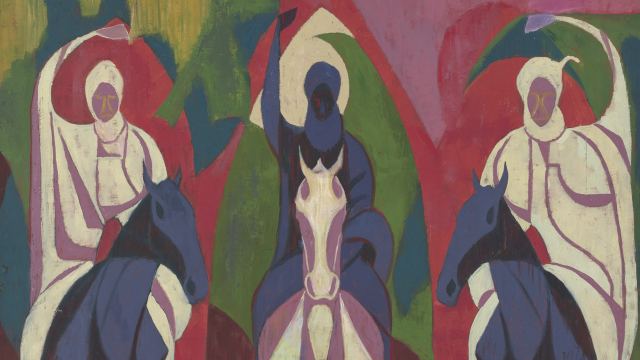
In October 1960, Nigeria won full independence from the UK, said Anny Shaw in The London Standard. This landmark moment sparked “a period of enormous cultural fecundity”, as artists sought to create a “visual identity” for the country – one that embraced indigenous traditions and the “buzz” of modern life, while reckoning with Nigeria’s “fraught colonial past”.
Now this cultural “renaissance” is the subject of a new exhibition at Tate Modern, which brings together some 250 pieces – including paintings, sculptures and textiles – by more than 50 artists, to examine Nigerian art pre- and post-independence. The result is a show that is sprawling but compelling, said Mark Hudson in The Independent. Other exhibitions of African art have tended to shy away from showing “the first gropings towards modernity from artists working in isolation from the international art world”, for fear of reinforcing the view that they are “folksy”, but this one lets “the work of those early explorers shine out”.
There is, unfortunately, a rather “dutiful” tone to this nine-room show, said Alastair Sooke in The Daily Telegraph. The work of important artists such as Ben Enwonwu (who sculpted Elizabeth II in 1957) is foregrounded, but several galleries are given over to various “schools”, as the exhibition strives to be properly “in depth”. Along the way there are “flashes of artistic magic” including Demas Nwoko’s “mysterious” paintings, and J.D. ’Okhai Ojeikere’s “astonishing” black and white 1970s photographs of women’s “intricate hairstyles”. But between them are a host of “middling” works, including too many early 20th century pieces reflecting African artists’ new interest in naturalism. It becomes a bit wearing, like double history on a sunny afternoon.
I completely disagree, said Jackie Wullschläger in the Financial Times. The show is full of brilliant things – and “what shines throughout is a sparkling diversity of making”. A piece by Asiru Olatunde, who came from a family of blacksmiths, is a sheet of aluminium hammered into “a massive, exquisitely detailed frieze” depicting village life. We also see the Yoruba gods that Adebisi Akanji, who trained as a bricklayer in his youth, sculpted in cement, while the riders in Jimo Akolo’s “Fulani Horsemen” (1962) “gallop right against the picture plane and off to the future”.
The show’s “star piece”, however, is the series of towering wooden sculptures that Enwonwu made for the forecourt of the Daily Mirror’s London HQ in 1960. There are seven of these figures, each possessed of “traditional attenuated Igbo features” and five of them holding an open newspaper. They disappeared later that decade, and were only rediscovered in 2012, in a garage at a secondary school in east London. This is an “entrancing, enlightening exhibition” – Tate’s “most revelatory in years”.
Tate Modern, London SE1. Until 10 May
Tate Modern’s ‘revelatory’ show includes 250 works examining Nigerian art pre- and post independence






